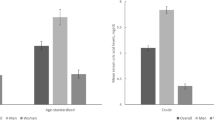Abstract
The aim of the study was to investigate the factors that promote the development of gout in Chinese patients with hyperuricemia. Chinese cohort with 659 patients with hyperuricemia who had no history of gout at base line had been followed up for 5 years. The baseline data of the general states (gender, age, occupation and education level), lifestyle and behavior (smoking, drinking, and diet), the major chronic diseases (diabetes and hypertension), family history and gout attacks, physical examination (height, weight and blood pressure), and blood parameters (creatinine, urea nitrogen, triglycerides, total cholesterol and high-density lipoprotein cholesterol) were recorded before the follow-up. Over the five-year period, 75 hyperuricemia patients developed gout. In the logistic regression model, shrimp intake and shell intake were the risk factors (P = 0.038 and P < 0.001, respectively) and, combined with diabetes, also served as risk factor for gout developed from hyperuricemia, with relative risk (RR) of 2.571 (95 % confidence interval (95 % CI), 1.110–5.953), and females served as protective factors of gout, with RR of 0.113 (95 % CI, 0.041–0.312, referred to male). We identified that shrimp intake and shell intake, combined with diabetes, were the independent risk factors, and females served as protective factors of gout in those suffering from hyperuricemia in coast regions of Shandong province, China.
Similar content being viewed by others
References
Wortmann RL, Kelley WN (2001) Gout and hyperuricemia. In: Ruddy S, Harris ED Jr, Sledge CB (eds) Kelley’s textbook of rheumatology, 6th edn. W. B. Saunders Company, Philadelphia, pp 1339–1376
Wallace KL, Riedel AA, Joseph-Ridge N, Wortmann R (2004) Increasing prevalence of gout and hyperuricemia over 10 years among older adults in a managed care population. J Rheumatol 31:1582–1587
Terkeltaub RA (2003) Clinical practice gout. N Engl J Med 349:1647–1655
Saag KG, Mikuls TR (2005) Recent advances in the epidemiology of gout. Curr Rheumatol Rep 7:235–241
Luk AJ, Simkin PA (2005) Epidemiology of hyperuricemia and gout. Am J Manag Care 11:S435–S442
Oyama C, Takahashi T, Oyamada M, Oyamada T, Ohno T, Miyashita M et al (2006) Serum uric acid as an obesity-related indicator in early adolescence. Tohoku J Exp Med 209:257–262
Yu ZM, Zhang LS, Yang LF (2004) The investigation and analysis of hyperuricemia in Guangzhou area. Acta Nutrimenta Sinica 26:201–203
Fang J, Alderman MH (2000) Serum uric acid and cardiovascular mortality: the NHANESI epidemiologic follow-up study, 1971–1992. National health and nutrition examination survey. JAMA 283:2404–2410
Bei ZP (2001) Diagnostic criteria for internal diseases, 4th edn. Science Press, Beijing
Chen HZ (2005) Practical science. People’s Medical Publishing House, Beijing
Miao Z, Li C, Chen Y, Zhao S, Wang Y, Wang Z et al (2008) Dietary and lifestyle changes associated with high prevalence of hyperuricemia and gout in the Shandong coastal cities of Eastern China. J Rheumatol 35:1859–1864
Hall AP, Barry PE, Dawber TR, McNamara PM (1967) Epidemiology of gout and hyperuricemia: a long-term population study. Am J Med 42:27–37
Roubenoff R, Klag MJ, Mead LA, Liang KY, Seidler AJ, Hochberg MC (1991) Incidence and risk factors for gout in white men. JAMA 266:3004–3007
Choi HK, Atkinson K, Karlson EW, Willett W, Curhan G (2004) Purine-foods, dairy and protein intake, and the risk of gout in men. N Engl J Med 350:1093–1103
Schlesinge N (2005) Dietary factors and hyperuricemia. Curr Pharm Des 11:4133–4138
Choi HK, Atkinson K, Karlson EW, Willett W, Curhan G (2004) Alcohol intake and risk of incident gout in men: a prospective study. Lancet 363:1277–1281
Choi HK, Curhan G (2004) Beer, liquor, and wine consumption and serum uric acid level: the third national health and nutrition examination survey. Arthr Care Res 51:1023–1029
Chuang SY, Lee SC, Hsieh YT, Pan WH (2011) Trends in hyperuricemia and gout prevalence: nutrition and health survey in Taiwan from 1993–1996 to 2005–2008. Asia Pac J Clin Nutr 20:301–308
Smith EU, Díaz-Torné C, Perez-Ruiz F, March LM (2010) Epidemiology of gout: an update. Best Pract Res Clin Rheumatol 24:811–827
Poletto J, Harima HA, Ferreira SR, Gimeno SG (2011) Hyperuricemia and associated factors: a cross-sectional study of Japanese-Brazilians. Cad Saude Publica 27:369–378
Terkeltaub RA (2001) Gout: epidemiology, pathology and pathogenesis. In: Klippel JH, Crofford L, Stone JH et al (eds) Primer on the rheumatic disease, 12th edn. Arthritis Foundation, Atlanta, pp 307–312
Agudelo C, Wise C (1998) Crystal-associated arthritis. Clin Geriatr Med 14:495–513
Niskanen L, Laaksonen DE, Lindstrom J, Eriksson JG, Keinänen-Kiukaanniemi S, Ilanne-Parikka P (2006) Serum uric acid as a harbinger of metabolic outcome in subjects with impaired glucose tolerance: the Finnish diabetes prevention study. Diabetes Care 29:709–711
Choi HK, De Vera MA, Krishnan E (2008) Gout and the risk of type 2 diabetes among men with a high cardiovascular risk profile. Rheumatology 47:1567–1570
Suppiah R, Dissanayake A, Dalbeth N (2008) High prevalence of gout in patients with type 2 diabetes: male sex, renal impairment, and diuretic use are major risk factors. N Z Med J 12:43–50
Rodríguez G, Soriano LC, Choi HK (2010) Impact of diabetes against the future risk of developing gout. Ann Rheum Dis 69:2090–2094
Acknowledgments
The authors thank Dr. Youxin Wang of Capital Medical University for his assistance in the statistical analysis.
Conflict of interest
The authors declare that they have no conflict of interest.
Author information
Authors and Affiliations
Corresponding authors
Additional information
Yangang Wang, Shengli Yan, Changgui Li, Shihua Zhao and Jing Lv contributed equally to the study.
Rights and permissions
About this article
Cite this article
Wang, Y., Yan, S., Li, C. et al. Risk factors for gout developed from hyperuricemia in China: a five-year prospective cohort study. Rheumatol Int 33, 705–710 (2013). https://doi.org/10.1007/s00296-012-2439-8
Received:
Accepted:
Published:
Issue Date:
DOI: https://doi.org/10.1007/s00296-012-2439-8




